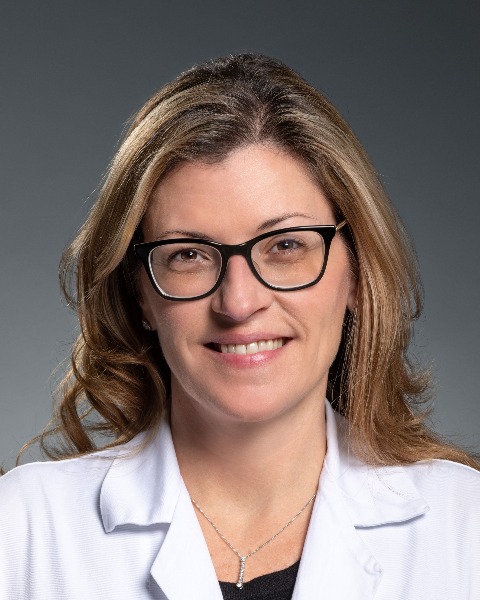Breast
E44: Surgical Management of the Axilla in Patients Presenting with Clinically Node Positive Hormone Receptor Positive, HER2 Negative (HR+/HER2-) Breast Cancer

Jacob M. Jasper, BS (he/him/his)
Medical Student
Tufts University
Boston, Massachusetts, United States
Olga Kantor, MD (she/her/hers)
Assistant Professor
Brigham and Women's Hospital
Boston, Massachusetts, United States
Laura Dominici, MD
Associate Chief of Surgery
Brigham and Women's Faulkner Hospital; Associate Surgeon, Brigham and Women's Hospital, Dana-Farber Cancer Institute
Scituate, Massachusetts, United States- FN
Faina Nakhlis, MD
Assistant Professor
Brigham and Women's Hospital, United States - EO
Esther R. Ogayo, BS
Senior Research Technician
Dana-Farber Cancer Institute, United States - SN
Suniti Nimbkar, MD
Medical Director, Breast Care Center
South Shore Hospital in clinical affiliation with Dana-Farber Brigham Cancer Center, United States - BB
Busem Binboga Kurt, MD
Research Pathologist
Dana-Farber Cancer Institute, United States 
Tari A. King, MD (she/her/hers)
Chief, Division of Breast Surgery
Brigham and Women's Hospital, Dana-Farber Cancer Institute
Boston, Massachusetts, United States
Elizabeth A. Mittendorf, MD, PhD, MHCM (she/her/hers)
Professor of Surgery
Brigham and Women's Hospital, Dana Farber Cancer Institute
Boston, Massachusetts, United States
ePoster Abstract Author(s)
Author(s)
Submitter(s)
Introduction: Many women with early-stage HR+/HER2- breast cancer undergo surgery as their initial treatment. While patients with cN0 disease are managed with sentinel lymph node biopsy (SLNB), optimal surgical management of the axilla in cN1 patients remains debated.
Methods:
Methods: A prospective institutional database was used to identify women age ≥18 with cT1-2N0-1 HR+/HER2- breast cancer treated with upfront surgery from 2016 to 2022. Women with multifocal or multicentric disease on imaging were excluded. The extent of pathologic nodal burden was examined according to cN status and presence of palpable lymph nodes (LNs) at presentation.
Results:
Results: A total of 4840 patients were identified, 4733 (97.8%) cN0 and 107 (2.2%) cN1. Among cN1 patients, 48 (44.9%) had palpable adenopathy. Four patients with palpable adenopathy underwent SLNB, all of whom had positive sentinel lymph nodes (SLNs) with macrometastases. Two of these patients had 2 +SLNs and did not undergo axillary lymph node dissection (ALND). The other 2 underwent ALND and had a total nodal burden of 5 and 7 positive nodes, respectively. The remaining 44 patients with palpable adenopathy underwent upfront ALND; total nodal burden was 1-2+ LNs in 13 and ≥3 in 30.
Among 59 cN1 patients who did not have palpable adenopathy, 26 underwent SLNB, 24 of whom had +SLNs. ALND was omitted in 13/24, all of whom had 1-2 +SLNs. Among the 11 undergoing SLN+ALND, the total number of +LNs was 2 in 1 patient, and ≥3 in 10 patients. The remaining 33 patients with non-palpable cN1 disease underwent upfront ALND; nodal burden was 1-2+ LNs in 18 and ≥3+ LNs in 15. For patients with non-palpable, image-detected cN1 disease, if axillary ultrasound (US) showed 1 or 2 suspicious nodes, 48.9% had 1-2+ nodes and 51.1% had ≥3+ nodes. If axillary US documented > 2 suspicious nodes (n=6), 100% had ≥3+ nodes.
In comparison, among cN0 patients, 905 (19.1%) did not have axillary surgery, 3174 (67.1%) had negative SLNs, 563 (11.9%) had 1-2+ LNs and 91 (1.9%) had ≥3+ nodes. Total nodal burden by clinical stage and whether adenopathy was palpable is summarized in the table.
Conclusions:
Conclusions: Patients with palpable cN1 disease at presentation have a higher burden of nodal disease than those whose cN1 status was identified by abnormal imaging. However, even among those with palpable adenopathy, one-third have only 1-2+ LNs and could potentially be spared ALND based on the results of clinical trials showing no benefit for ALND in the setting of low volume disease.
Learning Objectives:
- Upon completion, participant will be able to discuss the role of SLNB in patients presenting with clinically node positive HR+/HER2- breast cancer
- Upon completion, participant will be able to discuss the total nodal burden in patients with HR_/HER2- breast cancer presenting with clinically node positive disease
- Upon completion, participant will be able to discuss the potential role for axillary US in the evaluation of patients presenting with HR+/HER2- breast cancer
